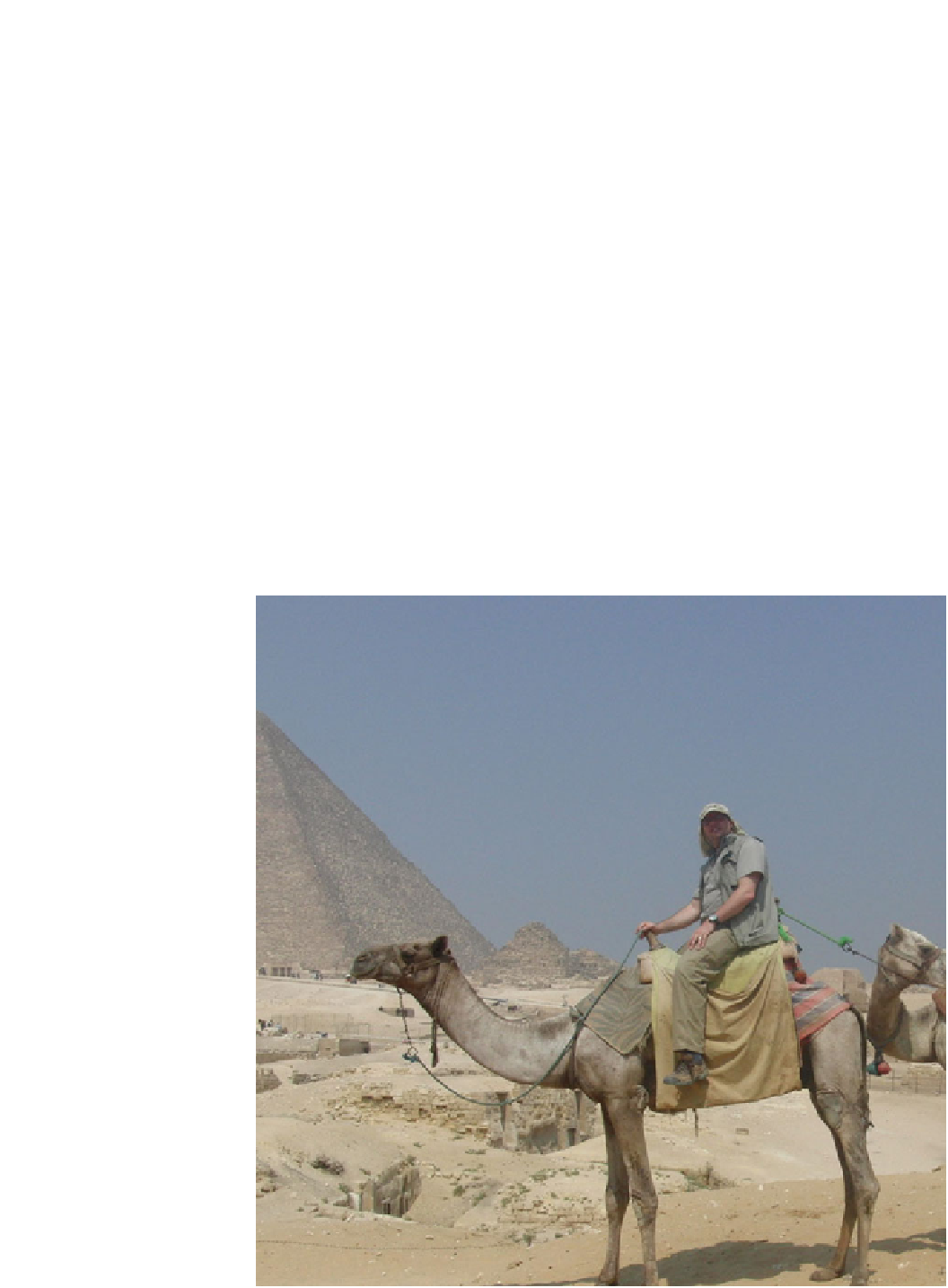Geoscience Reference
In-Depth Information
forward and step back in a frustrating but sustainable
manner, or one can attempt to storm the slope, running fast
enough compared with avalanche speed, that one can more
efficiently ascend. The choice here is a matter of decorum,
fitness, luggage and time of day; unencumbered young
students on a brisk morning seeing a brief opportunity to
experience dunes may enthusiastically embrace the latter
approach, a senior researcher making a long traverse with a
heavy GPR (see
Chap. 11
) on a hot afternoon may have to
plod on with the former.
Of course, people are not the only entities that walk on
sand. Everything from elephants (in Namibia) to beetles do
so. Some species have particular adaptations to desert sur-
vival and migration, most notably the 'ship of the desert',
the camel (Fig.
22.2
). Its long legs keep the body elevated
above the hot sand and give the stride needed for long
traverses. The famous hump is filled with fatty tissue (which
acts as a water store—fats contain more water per calorie
than do other tissue energy stores). These are general arid-
lands adaptations; specific to sand, however, are the fact
that the camel's wide feet splay out to minimize the ground
loading, and camels have long eyelashes and can close their
nostrils to cope with blowing sand and dust.
Fig. 22.1
A schematic of how the failure criterion of a sloping soil
such as a dune face can be computed by the so-called 'method of slices'.
The soil is assumed to fail along a curve surface: the forces on each slice
are estimated given the loading by the soil's weight and any exterior
loads. When the required frictional force S can no longer be provided by
the soil, the material will fail. Image US Army Corps of Engineers
Fig. 22.2
Camels are suited to
desert travel not only because of
their humps, but also because of
their wide feet which reduce
ground loading. First author, in
Egypt


Search WWH ::

Custom Search